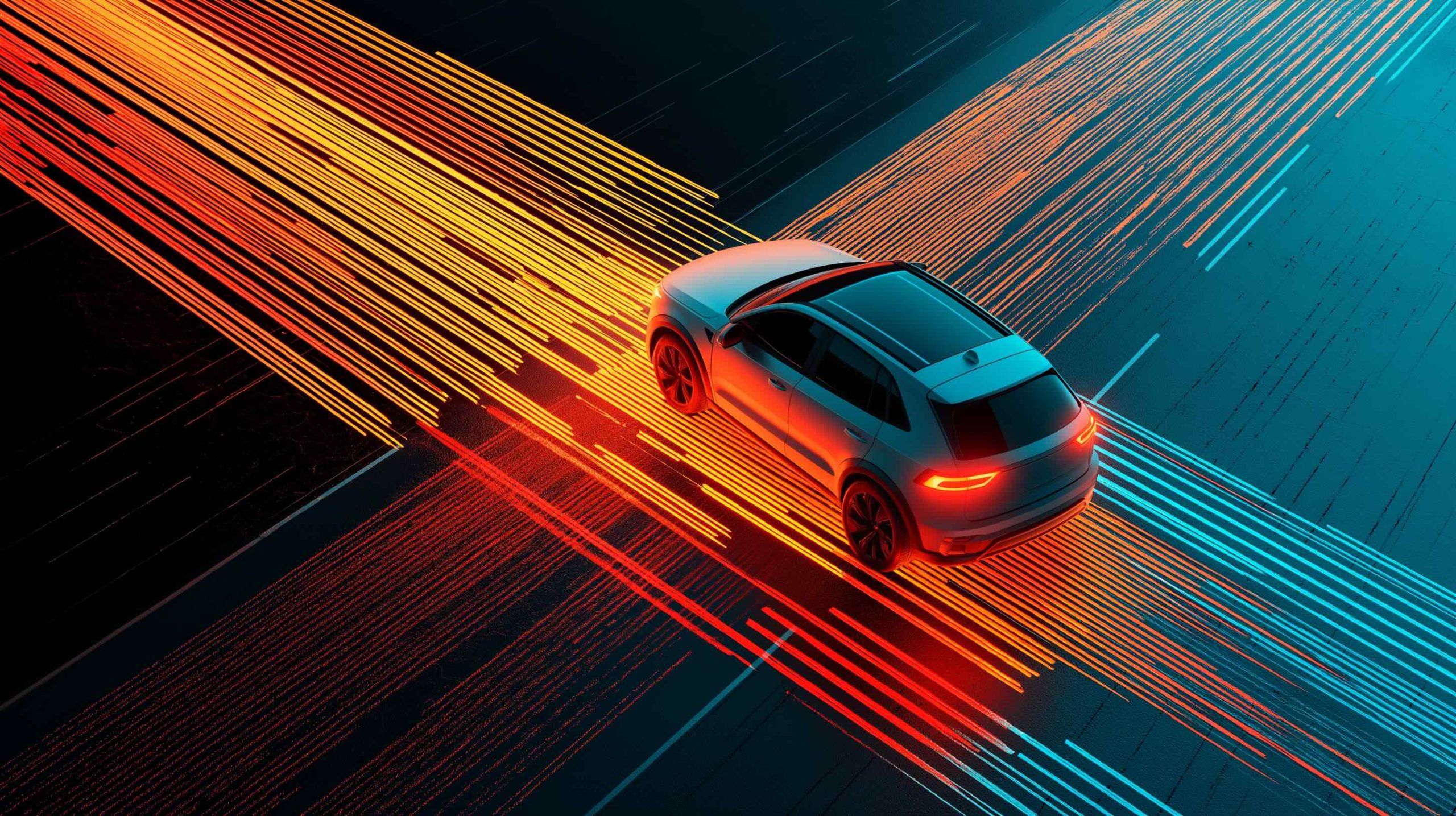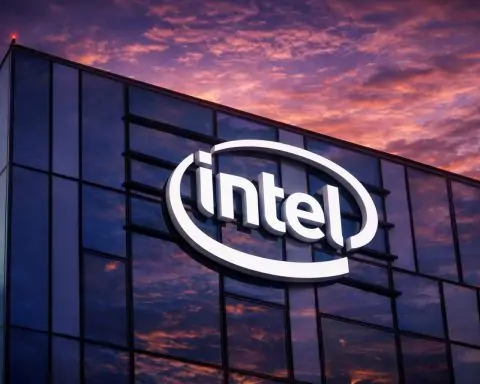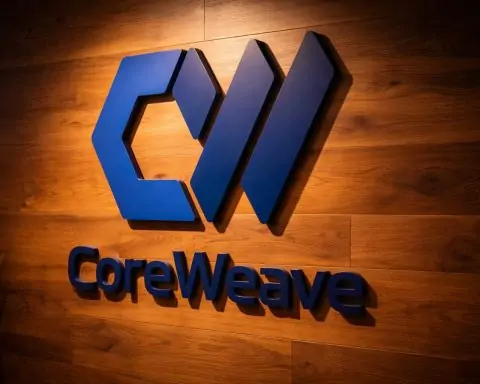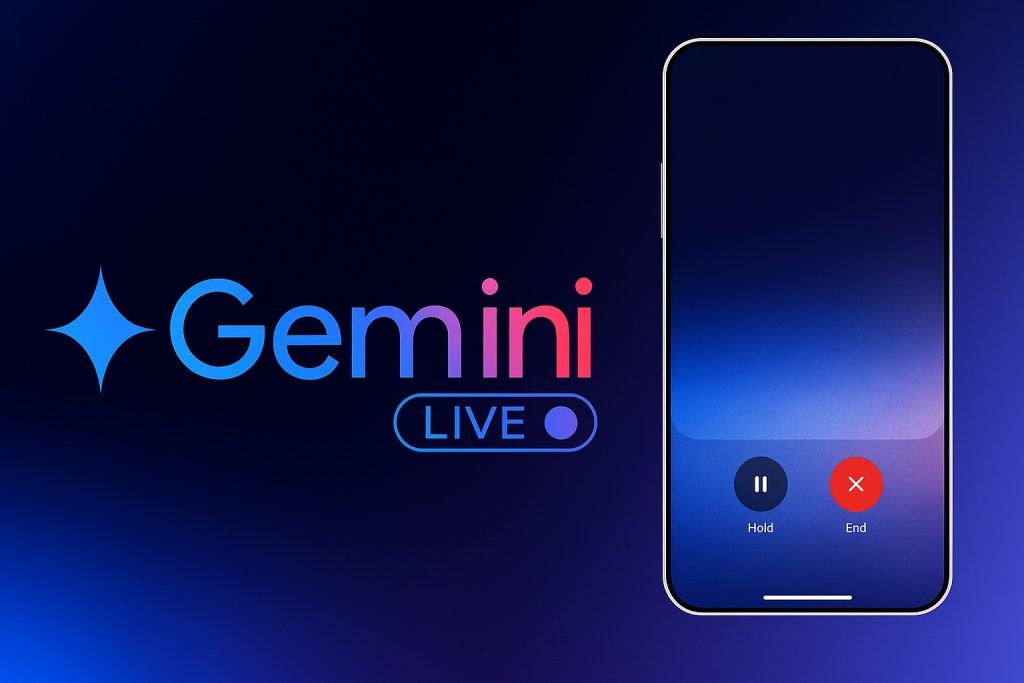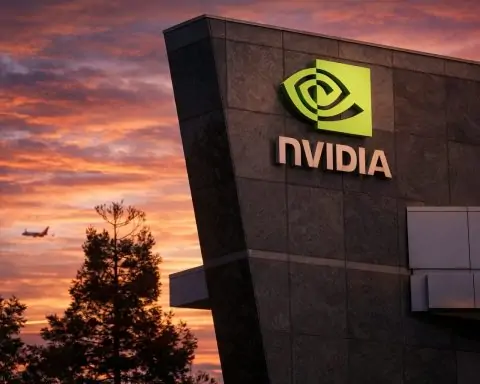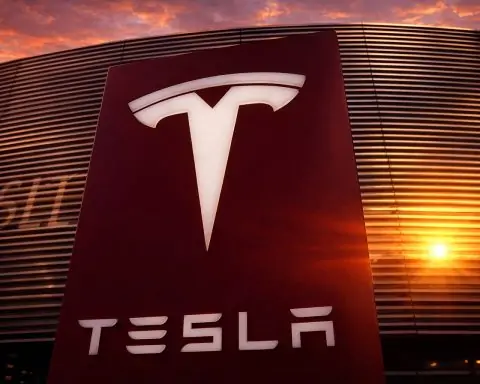- NVIDIA Drive Thor delivers up to 1,000 TOPS (INT8 sparse) on a single chip and can be paired via NVLink-C2C to about 2,000 TOPS for high-end Level 4–5 autonomy.
- Thor combines a Blackwell GPU with 2560 CUDA cores and 96 Tensor Cores, a 14-core Arm Neoverse V3 CPU complex, on a 4nm TSMC process, and supports up to 128 GB LPDDR5X memory.
- Thor is designed as a centralized automotive computer unifying autonomous driving, ADAS, digital cockpit and infotainment on one platform.
- Production of Drive Thor is slated to begin in 2025, with design wins at Li Auto, ZEEKR, BYD, Hyper and XPENG, and the Lynk & Co 900 SUV set to launch in China in Q2 2025.
- Tesla HW4, also known as FSD Computer 2, uses two redundant 7nm SoCs, each with a 20-core ARM CPU and roughly 50 TOPS per neural-network accelerator, totaling about 200 TOPS for the pair.
- HW4 provides 16 GB of RAM and 256 GB of NVMe storage, uses Samsung 7nm technology, and reintroduces a Phoenix HD radar with 11 cameras for vision-plus-radar fusion.
- HW4 first shipped in January 2023 to Model S and X, with Model Y and Model 3 following in 2023, and by late 2024 FSD Beta 13+ began using native 5 MP camera feeds and HW4-only features.
- Qualcomm Snapdragon Ride Flex is a 5nm platform (SA8775P) with Kryo Gen-6 CPUs, Adreno 663 GPU and Hexagon AI with HVX and HMX, delivering 16–24 TOPS per chip and up to about 2,000 TOPS when multiple chips and accelerators are used.
- Ride Flex has been adopted by GM for Ultra Cruise, Sony-Honda Afeela, BMW Cariad and VW Group, with production cars planned for Model Year 2025–2026, and a safety island plus hypervisor enabling mixed-criticality workloads.
- The article frames the three as a high-stakes choice: Thor as a single ultra-high-throughput platform for premium, HW4 as Tesla’s vertical-integrated vision-focused solution, and Ride Flex as a scalable ecosystem for many OEMs, so the best platform depends on use-case.
The race to power fully autonomous vehicles has spawned a new generation of automotive supercomputers. NVIDIA’s Drive Thor, Tesla’s Full Self-Driving (FSD) Hardware 4, and Qualcomm’s Snapdragon Ride Flex are three cutting-edge platforms vying to be the “brain” of tomorrow’s self-driving cars. Each system promises unprecedented AI performance and capabilities, from advanced sensor fusion and neural network processing to integrated in-cabin experiences. This report provides a comprehensive comparison of these platforms – their technical specs, performance metrics, features, vehicle integrations, and roadmaps – highlighting the latest developments as of August 2025. Industry experts and company leaders weigh in on how these AI driving chips stack up, and what their emergence means for the future of autonomous and software-defined vehicles.
NVIDIA Drive Thor – Next-Gen Centralized AI Compute
Overview: NVIDIA Drive Thor is the company’s next-generation automotive system-on-chip (SoC) slated to succeed the current Drive Orin platform in 2025 [1] [2]. Announced at GTC 2022, Drive Thor is described by NVIDIA as a “centralized car computer” uniting all major vehicle functions – from autonomous driving and ADAS to digital cockpit and infotainment – on a single platform [3]. It is built on NVIDIA’s new Blackwell GPU architecture (the successor to Ampere/Ada) and an Arm “Poseidon” CPU complex, with a design focus on both sheer AI performance and efficiency [4] [5]. Drive Thor effectively replaces NVIDIA’s previously planned “Atlan” chip (which was canceled) and represents a big leap from the Orin Xavier/Ampere generation [6].
Technical Specs & Architecture: Drive Thor delivers up to 1,000 TOPS (trillion operations per second) of AI performance (INT8 sparse) on a single chip [7] [8]. It achieves this via a combination of a powerful GPU and CPU cluster. The SoC integrates a Blackwell-based GPU with 2560 CUDA cores and 96 Tensor Cores, introducing an on-chip Transformer Engine optimized for neural networks and 8-bit floating point (FP8) precision [9]. This enables higher deep learning accuracy without sacrificing performance, bridging the gap between 32-bit and low-bit computations [10]. The CPU side features 14 Arm Neoverse V3 cores (automotive-grade “V3AE”) [11], giving it one of the highest-performance automotive CPU complexes. Drive Thor is fabricated on TSMC’s 4nm process, providing a major density and power efficiency boost over Orin (which was 8nm) [12] [13]. It also supports up to 128 GB of LPDDR5X memory, high-speed I/O, and new interconnects. Notably, two Thor SoCs can be linked via NVLink-C2C to act as a single logical computer, doubling throughput to ~2,000 TOPS for the most demanding Level 4–5 autonomy needs [14] [15]. This scalability allows automakers to add compute headroom by simply pairing chips.
Performance & Capabilities: In raw performance, Drive Thor is approximately 4× more powerful than NVIDIA’s current Drive Orin (Thor’s 1,000 TOPS vs. Orin’s ~254 TOPS) [16] [17]. NVIDIA notes Thor provides “20× the AI performance of its predecessor” when leveraging all its new features [18], though in practical INT8 TOPS it’s about fourfold Orin’s capability. Crucially, Thor is designed as a multi-domain platform: its compute resources can be partitioned so that some portion handles autonomous driving (perception, sensor fusion, path planning) while another portion runs in-cabin AI, digital instrument clusters, or infotainment [19] [20]. This isolation is supported by virtualization and an ASIL-D safety architecture, meaning time-critical ADAS tasks can run in parallel with cockpit apps without interference [21]. For example, an automaker could dedicate the full 1000 TOPS to self-driving, or allocate say 700 TOPS to driving tasks and 300 TOPS to the cockpit/UX – all on one chip [22] [23]. This consolidation aims to reduce the dozens of separate electronic control units (ECUs) in cars today, cutting cost and complexity [24] [25]. NVIDIA also touts Thor’s support for generative AI applications in vehicles, noting the Blackwell GPU architecture includes a “generative AI engine” ideal for running transformer models, large language models, and advanced driver monitoring or voice assistants inside the car [26] [27]. In the words of NVIDIA’s automotive VP, Xinzhou Wu, “accelerated compute has led to transformative breakthroughs, including generative AI, which is redefining autonomy and the transportation industry” [28]. With its combination of TOPS, new AI instructions, and unified memory, Drive Thor is positioned as an all-in-one supercomputer for Level 2+ through Level 4 autonomy [29] [30].
Integration & Use Cases: Drive Thor is slated to enter production vehicles starting in 2025, with several automakers already planning to deploy it [31]. NVIDIA has announced design wins across global OEMs, especially in China: EV makers Li Auto and ZEEKR were early to confirm Thor for their next-gen models, and at GTC 2024 BYD, Hyper (GAC’s luxury brand), and XPENG also revealed they will build upcoming fleets on Drive Thor [32] [33]. For instance, XPeng said Thor will power its proprietary XNGP driving system (enabling autonomous driving, parking, and occupant monitoring) in future vehicles [34]. The first production car with Drive Thor on board is expected to be the Lynk & Co 900 SUV (a Geely/Volvo-affiliated brand), launching in China in Q2 2025 [35] [36]. Lynk & Co touts Thor’s 1000 TOPS compute as the core of its new “Haohan” ADAS, enabling navigation-guided pilot assist without HD maps [37] [38]. Outside of passenger cars, Thor is also being adopted in commercial autonomous vehicles – startup Nuro will use Drive Thor in its next-gen delivery robots, and trucking firms Plus and Waabi are integrating Thor for Level 4 self-driving semi-truck systems [39] [40]. In the premium segment, NVIDIA’s long-time partner Mercedes-Benz is likewise expected to migrate from Orin to Thor for its future software-defined vehicles. Overall, by unifying ADAS and cockpit domains, Drive Thor is attracting OEMs looking to simplify their E/E architectures. Bosch, a major Tier-1 supplier, even announced a central compute platform based on Snapdragon Ride Flex and NVIDIA Thor (up to 2,000 TOPS) to offer automakers turnkey cross-domain computing solutions [41] [42].
Comparison to Prior Generation: Drive Thor represents a significant generational jump from NVIDIA’s current flagship, Drive Orin (2022). Orin delivers 254 TOPS (INT8) and features 12 Cortex-A78AE cores and an Ampere GPU; Thor roughly quadruples the TOPS and introduces more advanced cores (Neoverse V3) and GPU architecture [43]. NVIDIA explicitly notes Thor is “4 times more powerful than the widely used Nvidia Orin chip” [44] [45]. Notably, Thor also replaces multiple chips with one – where a Level 3 system today might use an Orin for ADAS plus separate chips for infotainment and driver monitoring, one Thor can handle all those tasks [46] [47]. This one-chip strategy differs from NVIDIA’s earlier multi-SoC platforms (like Drive PX Pegasus which combined Xavier + GPU). By supporting NVLink coupling of two Thors, NVIDIA still allows ultra-high-end configurations (e.g. robotaxis) to scale up to ~2 PFLOPS (2000 TOPS) on a unified software stack [48] [49]. In summary, Drive Thor provides massive performance headroom (particularly for AI workloads) and consolidates functionality, aligning with automakers’ push toward centralized computing and OTA-upgradeable vehicles. As NVIDIA puts it, “when deployed in Level 3+ use cases, a single Drive Thor can replace multiple leading-edge devices in vehicles today”, yielding cost and power savings for OEMs [50]. It’s the linchpin of NVIDIA’s roadmap to support everything from Level 2+ ADAS to full self-driving on one scalable platform.
Tesla FSD Hardware 4 (HW4) – Tesla’s Custom Full Self-Driving Computer
Overview: Tesla’s Hardware 4 – also known as FSD Computer 2 or Autopilot HW4 – is Tesla’s in-house designed computing platform for Autopilot and Full Self-Driving, introduced in early 2023. Unlike NVIDIA and Qualcomm, which supply chips to many OEMs, Tesla HW4 is built exclusively for Tesla’s own vehicles as the successor to 2019’s Hardware 3. It began shipping in production Teslas (Model S/X) around January 2023 [51] [52]. Elon Musk described HW4 as a substantial upgrade, stating it is “3 to 5 times, maybe up to 8 times” more powerful than HW3 in terms of computing capability [53]. Hardware 4 comes paired with a new sensor suite – including higher-resolution cameras and the reintroduction of radar – aimed at enabling Tesla’s vision-based FSD Beta software to eventually achieve true autonomous driving. Essentially, HW4 is Tesla’s latest “brain” for running neural networks that perceive the environment and make driving decisions, tightly integrated into Tesla’s vertically-developed self-driving stack.
Technical Specs & Architecture: Tesla’s HW4 computer is built around a Tesla-designed SoC fabricated by Samsung on a 7nm process [54]. Each HW4 unit actually contains two redundant SoC “nodes” on the board (as did HW3), though Tesla can choose to run them in hot-redundant or combined mode. According to a teardown by @greentheonly (a known Tesla hacker), the HW4 SoC contains a 20-core ARM-based CPU (up from 12 cores in HW3) running at 2.35 GHz, along with Tesla’s proprietary neural network accelerators (NPUs) and other co-processors [55]. The neural network “accelerator cores” in HW4 are improved to ~50 TOPS each, vs ~36 TOPS in HW3, yielding roughly 100 TOPS per chip dedicated to neural network inferencing [56] [57]. With two chips per vehicle, the total theoretical AI compute is around ~200 TOPS (though in practice Tesla may reserve one chip for redundancy). Tesla also upgraded memory – HW4 features 16 GB of RAM and 256 GB of NVMe storage for the FSD computer, which is 2× the RAM and 4× the storage of HW3 [58] [59]. Notably, Tesla used faster GDDR6 memory for HW4’s neural processors and UFS 3.1 flash storage, to accommodate the bandwidth of higher-resolution video streams [60] [61]. The die size of the HW4 FSD chip is actually smaller than HW3’s, thanks to the 7nm process (HW3 was 14nm), despite HW4 packing more transistors and greater performance [62] [63]. For graphics/visualization, Tesla still includes an AMD Ryzen-based infotainment processor (with integrated GPU) on the board, but in HW4 Tesla reallocated resources, giving the infotainment side half the RAM/storage of before while beefing up the Autopilot side [64] [65]. This reflects Tesla’s priority on FSD: the Autopilot computer gets the high-speed memory and bulk of compute power, whereas the MCU (Media Control Unit) in HW4 Models S/X/Y has slightly reduced specs (sufficient for UI and streaming, but not gaming at prior levels) [66] [67]. Overall, HW4’s architecture is an evolution of HW3’s dual-SoC design, with more CPU cores, upgraded NPUs, and support for more sensors, all tailored to run Tesla’s neural nets more effectively.
Sensor Suite and Capabilities: Alongside the compute upgrade, Tesla’s HW4 deployment brought significant changes to the vehicle’s sensors – indicating Tesla’s holistic approach to FSD. Camera resolution has jumped from 1.2 MP to 5 MP sensors, and Tesla added three new cameras (going from 8 external cameras in HW3 to 11 in HW4) for improved coverage [68] [69]. Notably, HW4 cars have two forward-facing cameras instead of three (the previous narrow telephoto lens was dropped, presumably made redundant by higher-res main cameras) [70], but Tesla added cameras in the front bumper to eliminate blind spots (useful when peeking out of obstructed intersections) [71]. The HW4 cameras also include LED flicker mitigation to better read digital signs and traffic lights [72] [73], and heater elements to defog the camera lenses in bad weather [74]. Additionally, Tesla has brought back radar with HW4: filings show a new “Phoenix” HD radar unit in these vehicles, after Tesla had removed radar in 2021 on HW3 cars [75] [76]. This suggests HW4 will fuse vision with a high-resolution radar sensor, enhancing depth perception and redundancy (though as of 2025, the radar’s full use in FSD software is still in progress). Altogether, HW4 provides Tesla’s software with higher-fidelity inputs – more pixels, new viewing angles, radar returns – and the extra compute to handle them. Early reports indicated HW4 initially ran FSD software in a compatibility mode (downscaling camera images, etc., to mimic HW3) until Tesla could update the neural networks to fully exploit the new hardware [77] [78]. By late 2024, Tesla’s FSD Beta version 13+ began using native 5MP camera feeds and HW4-only features, showing the platform’s headroom will enable new capabilities (e.g. improved object detection at long range, “bird’s eye view” parking assists, etc.). Elon Musk has noted that HW3, while capable of current FSD beta, may not be enough for future unsupervised autonomy, whereas HW4 is designed with more safety margin. Indeed, Musk said if Tesla cannot achieve safe full self-driving on HW3, “they will upgrade cars to HW4 at no cost” – a nod to HW4’s greater capability [79] [80]. In practice, Tesla hopes HW4 will be sufficient for full autonomy, but they are already planning an even more powerful HW5 (as discussed below).
Real-World Performance: Tesla has not published TOPS or FLOPS figures for HW4, but the improvements can be inferred. Musk’s claim of 3× to 8× HW3’s performance is likely scenario-dependent [81]. Hardware 3 featured dual 144 TOPS chips (72 TOPS each); HW4’s dual chips (~100 TOPS each) nominally offer ~200 TOPS, which is roughly 2.5–3× HW3’s neural network throughput. Certain tasks (like video processing or occupancy networks) may see bigger gains due to HW4’s expanded memory and updated accelerator design – hence the “up to 8×” comment. In early side-by-side tests, HW4 vehicles have demonstrated faster image processing and the ability to render more objects in visualizations than HW3, though end-to-end driving behavior remains software-limited [82]. Importantly, Tesla restored full redundancy with HW4: the dual compute nodes are intended to cross-check each other and take over if one fails, improving safety [83] [84]. (Under HW3, Tesla eventually repurposed both chips for active computations as FSD Beta expanded, reducing redundancy.) With HW4’s extra headroom, Tesla can once again run one chip in shadow mode or for failover. Another notable aspect is power consumption – HW4 draws about 30–50% more power than HW3 (estimated up to ~160 W vs 100 W for HW3) due to the beefier chips and cooling for cameras [85] [86]. Tesla accepts this power cost to unlock more advanced autonomy features. Owners of new Model Y’s with HW4 have observed the system’s smoother behavior and potential for features like surround-view monitoring (bird’s-eye view) that were not possible on HW3’s limited camera set [87] [88]. In summary, while Tesla HW4 may not match the raw TOPS of NVIDIA or Qualcomm’s latest (it’s closer to NVIDIA’s last-gen Orin in compute), it is highly optimized for Tesla’s specific AI workload – running massive vision and planning neural networks that Tesla continuously trains on billions of fleet miles. Tesla’s tight integration of hardware and software means HW4’s real-world performance is best measured by FSD software advances, which have started to leverage the new hardware in late 2024 and 2025.
Deployment and Vehicles: Hardware 4 is already in wide deployment across Tesla’s lineup. It first appeared in refreshed Model S and X units from January 2023 [89], and by mid-2023 it was included in new Model Y and Model 3 builds (including the 2024 Model 3 “Highland” refresh). All Tesla Cybertruck vehicles (starting production in late 2023) are also equipped with HW4. Essentially, any Tesla built from 2023 onward has or will have HW4, making it one of the most proliferated new ADAS platforms on the road within a short time. Unlike Nvidia and Qualcomm systems which OEMs may test in a few thousand vehicles initially, Tesla deployed HW4 at scale almost immediately – leveraging its consumer fleet to gather data and validate the hardware. However, Tesla does not supply HW4 to other manufacturers; it’s an internal asset solely for Tesla’s self-driving efforts. This vertical integration is a key differentiator: Tesla tightly couples hardware design, neural network development, and even its vehicle sensor layout. An example is how Tesla chose to omit LiDAR and rely on cameras (and now a single radar) with HW4, in line with Musk’s vision that “humans drive with eyes and a brain, so cameras and neural nets are the solution”. While rivals like NVIDIA support lidar and HD maps, Tesla’s HW4 is built to push the envelope of camera-only perception (with radar as a supplement for depth). This strategy has trade-offs, but Tesla’s advantage is the vast real-world data its cars generate – which in turn informs HW4’s design and the FSD software that runs on it.
Comparison to Prior Generations: Hardware 4 is the fourth iteration of Tesla’s Autopilot computer. Compared to HW3 (FSD Computer 1, introduced 2019), HW4 roughly doubles to triples most specs: 2× the number of neural accelerators per chip (and higher TOPS per accelerator), 1.7× the CPU cores, 2× GPU frequency (Tesla uses a small integrated GPU mainly for camera pixel preprocessing and visualization), and significantly more memory and bandwidth [90] [91]. It also adds new safety microcontrollers (Trip cores) and improved power management for redundancy [92] [93]. Importantly, HW4 was designed to accommodate Tesla’s ever-growing neural networks – Andrej Karpathy (Tesla’s former AI director) had noted that HW3 was created because HW2 lacked the compute for newer neural nets [94] [95]; similarly, by 2021–22 Tesla had neural nets in development that could not run on HW3 in real-time, prompting the need for HW4’s uplift. This pattern continues: at the 2024 shareholder meeting, Elon Musk revealed Tesla Hardware 5 (“AI 5”) is planned for January 2026, targeting 10× the capability of HW4 [96]. Musk indicated HW5 will be so powerful (800 W consumption) that it’s only intended for full autonomy and probably robotaxi usage [97] [98]. In context, that means Tesla expects HW4 to suffice for consumer cars and the current FSD program, while HW5 will be a specialized leap (likely involving multi-chip compute or 3D stacking) for the endgame of autonomy. In summary, Tesla’s HW4 builds on lessons from HW3 and addresses its shortcomings by providing more headroom for neural nets and sensor data. It has enabled Tesla to reintroduce features (like radar and more cameras) that were out of reach with HW3’s limits. While Tesla doesn’t quote TOPS or advertise specs, HW4’s efficacy will ultimately be judged by Tesla’s progress in achieving reliable self-driving on it. As of 2025, HW4 is Tesla’s workhorse platform, delivering incremental FSD improvements and serving as a bridge to the ambitious HW5 in 2026.
Qualcomm Snapdragon Ride Flex – Converged ADAS & Cockpit Platform
Overview: Qualcomm’s Snapdragon Ride Flex is a scalable automotive SoC family introduced in 2023 that uniquely supports mixed-criticality workloads – meaning it can run ADAS (advanced driver assistance) functions and digital cockpit applications simultaneously on one chip [99] [100]. Announced at CES 2023, Ride Flex extends Qualcomm’s Snapdragon Ride portfolio (first launched in 2020) into a new paradigm of “central compute” for software-defined vehicles. The Flex SoC is positioned as an “all-in-one” solution for car makers who want to consolidate both driving tasks (like vision perception, sensor fusion, automated driving) and infotainment/cluster tasks (like instrument graphics, multimedia, driver monitoring) on a single high-performance platform [101] [102]. Qualcomm achieved this by designing the Flex SoC with multiple isolated execution domains and a safety island, allowing it to meet ASIL-D safety standards for critical ADAS processes even while entertainment or OS-heavy processes run in parallel [103] [104]. Nakul Duggal, Qualcomm’s automotive SVP, explained their approach: “the silicon, the underlying software, and higher stack are developed so you can run ADAS and infotainment side by side with predictability and reliability”, emphasizing determinism and freedom-from-interference between domains [105] [106]. In short, Snapdragon Ride Flex is Qualcomm’s answer to the industry’s push for centralized, software-updatable vehicle architectures, and it leverages Qualcomm’s strengths in mobile SoCs, power efficiency, and connectivity to compete in the autonomous driving arena long dominated by NVIDIA and Mobileye.
Technical Specs & Architecture: The Snapdragon Ride Flex SoC (flagship SA8775P model) is built on a cutting-edge node (5nm) and features a heterogeneous compute architecture similar to smartphone Snapdragons, but optimized and hardened for automotive. Key components include: a multi-core Kryo Gen-6 CPU (custom Armv8 cores with automotive enhancements), an Adreno 663 GPU, and Qualcomm’s powerful Hexagon DSP/AI engine [107] [108]. The Kryo CPU likely consists of high-performance Cortex cores (e.g. Cortex-A78 or newer) and efficiency cores, enabling the chip to run OS like Android or QNX for infotainment in parallel with an RTOS for ADAS. The Adreno 663 GPU provides GPU compute for vision as well as rich graphics for cockpit displays [109] [110]. For AI acceleration, the Flex SoC integrates a Hexagon Tensor Processor with quad Hexagon Vector eXtensions (HVX) and dual Hexagon Matrix co-processors (HMX) [111] [112]. This combo acts as Qualcomm’s NPU, delivering high TOPS for deep learning inference (object detection, path planning, etc.). Qualcomm hasn’t publicly stated peak TOPS for a single Flex SoC in 2023, but it’s positioned in a range sufficient for Level 2+ ADAS. In fact, initial Ride Flex chips offer 16–24 TOPS of AI compute (targeting “entry to mid-level” systems) [113]. However, the architecture is scalable: Qualcomm can offer higher-bin versions or combine chips. The Flex platform supports using multiple SoCs and external accelerators in concert – Qualcomm noted that two Flex SoCs plus two AI accelerator chips could reach up to 2000 TOPS for L4/L5 automated driving [114] [115]. This suggests a roadmap where Qualcomm can mix and match components (e.g., a cockpit-ADAS SoC + a pure accelerator chip) to serve different performance tiers. Indeed, Qualcomm’s strategy contrasts with NVIDIA’s one-giant-chip approach: Qualcomm provides a tiered solution lineup (from 16 TOPS single chips for ADAS Level 1/2, up to multi-chip “supercomputer” configurations for Level 4) [116] [117]. The Snapdragon Ride Flex is also notable for its built-in safety island (ASIL-D) and hypervisor support. It can run multiple operating systems concurrently – for example an Android OS for infotainment and an QNX or AUTOSAR OS for ADAS – with spatial and temporal isolation [118] [119]. This allows a single physical SoC to act as if it were two separate computers, one meeting the strict real-time and safety needs of driving automation, and the other handling luxury UI features. Qualcomm has leveraged its expertise in low-power, high-integration mobile chips to make Ride Flex power-efficient as well, enabling air-cooled implementations in cars (a factor GM cited in choosing it for Ultra Cruise, noting it avoids “heavy and inefficient liquid cooling lines” by being air-cooled) [120] [121].
Performance & Capabilities: In terms of performance, the current Snapdragon Ride Flex SoC is sufficient for Level 2+ ADAS and combined cockpit in mid-range vehicles, while Qualcomm’s next-gen iterations will scale to higher autonomy levels. The entry Flex SoCs (16–24 TOPS) can handle functions like lane-keeping, adaptive cruise, 360° surround camera processing, and simultaneous digital dashboard/infotainment rendering [122]. For higher-end needs, Qualcomm announced that future Flex-based platforms (in development) aim to support up to L3/L4 autonomy with ~600 to 1000+ TOPS per system, achieved by multiple chips working together [123] [124]. A slide from Qualcomm’s 2022 investor day shows the Snapdragon Ride roadmap scaling from ~16 TOPS to ~2000 TOPS, covering NCAP Level 1 safety up to full self-driving stacks [125]. The key capability of Ride Flex is its mixed-criticality compute: it is one of the industry’s first SoCs that can run cluster graphics, infotainment apps, computer vision algorithms, and AI driving tasks all on one hardware [126] [127]. For example, the Flex chip could simultaneously drive multiple high-resolution displays (instrument cluster, center touchscreen, AR head-up display) via its GPU, while also running camera perception (object/pedestrian detection), sensor fusion, and even path planning on its AI engines. Qualcomm has a software stack called Snapdragon Ride Vision, inherited from its acquisition of Arriver (from Veoneer), which provides an open ADAS perception stack (camera-based lane, vehicle, sign detection, etc.) optimized for the Snapdragon SoCs [128]. This Vision stack is pre-integrated on Flex, giving automakers a head start for Level 2 features. Additionally, Qualcomm emphasizes connectivity and telematics integration (part of its “Digital Chassis” platform) – a Flex-based system can seamlessly connect to 5G, V2X, cloud services, etc., which is crucial for OTA updates and connected AD. The Ride Flex SoC supports multi-gig Ethernet, PCIe, GNSS positioning, and a host of sensor inputs (camera, radar, ultrasonics) via the development platform [129] [130]. In safety terms, the Flex SoC follows the Safety Element out of Context (SEooC) approach and has independent safety subsystems to monitor the execution of ADAS tasks [131]. This helps meet automotive functional safety requirements even when running complex software. Qualcomm has noted one benefit of deep integration: an EV’s battery cooling loop could be co-opted to cool the Snapdragon SoC, enabling sustained performance when needed [132] [133]. All these features position Snapdragon Ride Flex as a cost-effective yet powerful solution for automakers who want one compute platform for both driving and in-cabin intelligence.
Integration & Automotive Adoption: Qualcomm has been rapidly winning automotive design slots, leveraging partnerships and its reputation in connectivity. The Snapdragon Ride Flex (and Snapdragon Ride platform overall) has secured commitments from several major automakers for 2024–2025 vehicles. Notable integrations include: General Motors’ Ultra Cruise – GM confirmed that its new hands-free driving system Ultra Cruise (debuting on the 2024 Cadillac Celestiq) is powered by Qualcomm’s Snapdragon Ride compute [134] [135]. The Ultra Cruise “brain” consists of multiple Snapdragon SoCs on two small boards, delivering the power of “several hundred PCs” for 360° sensing (cameras, radar, lidar) and driving decisions [136] [137]. GM touted that despite its compact size (fits behind the glovebox), the Snapdragon-based Ultra Cruise computer can handle “95% of driving scenarios door-to-door” under supervision [138] [139]. Another high-profile partner is Sony Honda Mobility – their upcoming AFEELA EV (expected 2025) will use Qualcomm’s Snapdragon Digital Chassis, including Ride for ADAS/AD and Snapdragon Cockpit for infotainment [140]. Sony-Honda specifically highlighted Qualcomm as a key technology provider for AI and autonomous features in the Afeela. BMW has also entered a long-term agreement with Qualcomm (and Arriver) to co-develop its next-gen automated driving stack on Snapdragon Ride SoCs [141] [142]. This means starting mid-decade, new BMW models (likely on the “Neue Klasse” platform) will run their Level 2/3 driving software on Qualcomm chips instead of Mobileye EyeQ. In Europe, Volkswagen’s Cariad subsidiary in 2022 selected Qualcomm Snapdragon Ride for its future advanced ADAS platform, aiming to deploy it across millions of VW Group vehicles (VW reportedly has rights to modify and extend the stack in-house) [143] [144]. At CES 2023, VW’s CEO of Cariad praised the scalability and flexibility of Qualcomm’s Flex architecture as the reason they partnered [145] [146]. This is a huge win, as VW plans to use Snapdragon-based systems for both its volume brands and eventually Audi/Porsche, covering applications up to Level 4 in a unified architecture [147] [148]. In China, Qualcomm has lined up multiple EV startups and suppliers: e.g., Nio and Xpeng have evaluated Snapdragon chips (though Xpeng chose NVIDIA for latest models), and Neta (Hozon Auto) will use a Snapdragon Ride Flex in its upcoming platform with a Chinese Tier-1 (ThunderSoft) [149]. LG Electronics is integrating Snapdragon Ride Flex into an “integrated controller” product for automakers (combining ADAS and cockpit control), indicating Tier-1 suppliers are offering Qualcomm-based ECUs off the shelf [150]. Qualcomm claims that its Snapdragon Ride platform (inclusive of Flex) is already in production vehicles and has a pipeline of >20 automaker design wins for various domains [151] [152]. For instance, Snapdragon Cockpit chips are in many 2022–2025 cars (for infotainment), and those same OEMs can adopt the Flex to add ADAS on the same hardware. To summarize, Qualcomm has leveraged partnerships with GM, VW, BMW, Honda/Sony, Stellantis, JLR and more, making Snapdragon Ride Flex likely to be present in a wide range of models from luxury flagships to affordable EVs by 2025–2026. This broad adoption strategy (providing low, mid, high-tier chip options) is a contrast to NVIDIA’s focus on fewer, high-end platforms [153]. It aligns with Qualcomm’s strength in being a mass supplier and adapting to each OEM’s needs – whether it’s powering hands-free highway driving in a Cadillac or enabling an affordable car to have combined ADAS + infotainment in one box.
Market Status & Roadmap: The Snapdragon Ride Flex SoC entered the market in early 2024, after sampling to customers in 2023 [154]. Qualcomm confirmed that Flex-powered systems are expected in Model Year 2025 vehicles [155], meaning cars hitting showrooms in late 2024 through 2025. Indeed, the 2024 Cadillac Celestiq (limited production starting end of 2023) is among the first, and more models (potentially a 2025 Cadillac Escalade or other GM vehicles) will follow with Ultra Cruise. By 2025, Honda’s Prologue EV and the Afeela sedan should also bring Snapdragon Ride to consumers. VW’s timeline for Snapdragon-based ADAS is around 2026 for initial rollout, given they had to realign their software timeline. As for the roadmap, Qualcomm is continuously iterating: they have hinted at next-gen Ride Flex SoCs on 4nm or 3nm nodes with higher TOPS, and dedicated AI co-processors to augment them for Level 4. One statement from Qualcomm at CES was that combinations of next-gen Flex SoCs and accelerators “can support up to 2,000 TOPS, similar to what NVIDIA has claimed for Thor” [156]. This indicates Qualcomm fully intends to match NVIDIA at the high end by using a multi-chip approach (e.g. dual SoCs + external NPUs). Given Qualcomm’s expertise in chip design, it’s plausible a future single-chip (Flex v2) could itself reach several hundred TOPS, especially if fabricated at 3nm and using newer IP cores. Another aspect of Qualcomm’s roadmap is software: through OTA updates and its cloud-connected Car-to-Cloud services, Snapdragon platforms can gain new features over time. Duggal has emphasized the idea of monetizing the software-defined vehicle, where once an automaker has these high-performance chips in cars, they can enable new capabilities via software updates and subscriptions [157] [158]. This vision aligns with why OEMs like the Snapdragon Flex’s upgradable headroom. In summary, Qualcomm’s near-term roadmap will see Ride Flex proliferate in production vehicles from 2024 onward (especially in L2+ systems), and the company is prepared to scale its compute offerings to tackle L3–L4 autonomy in the latter half of the decade. Qualcomm’s multi-faceted strategy (cockpit, ADAS, connectivity, cloud) makes it a strong contender as cars become more like rolling smartphones in terms of updatable platforms.
Comparison to Prior Generation: Snapdragon Ride Flex builds on Qualcomm’s earlier automotive chips such as the Snapdragon SA8155P (infotainment SoC widely used for digital cockpits) and the first-gen Snapdragon Ride announced in 2020 (which was mainly for ADAS-only use). The key evolution with Flex is the convergence of ADAS and cockpit. Previously, an automaker might use a Snapdragon Cockpit chip for infotainment and a separate Qualcomm or third-party chip for ADAS. Now, a single Flex SoC can replace multiple chips, reducing cost and complexity [159] [160]. In raw performance, the initial Ride platform (SA8155P + AI accelerators) could achieve on the order of ~30–60 TOPS for ADAS; the Ride Flex starts in a similar range per chip (16–24 TOPS) but is designed to scale to much higher via multi-chip [161] [162]. Qualcomm’s modular approach means an OEM can start with a lower-tier Flex for Level 2 and later upgrade to a higher-tier configuration (adding chips) for Level 3/4 without a complete architecture change. Another improvement is in safety and software: Qualcomm acquired Arriver’s vision perception software and has integrated it tightly with the SoC, giving a production-ready ADAS stack out of the box [163]. This is something prior Snapdragon automotive chips didn’t offer (they were hardware-only solutions). Additionally, the Flex SoC introduces hypervisor and virtualization capabilities that Qualcomm’s earlier ADAS chips lacked, reflecting a maturation in their automotive offerings to meet the domain controller trend. In short, Snapdragon Ride Flex is Qualcomm’s coming-of-age in ADAS/AV computing, evolving from standalone infotainment or ADAS chips to a combined powerhouse that can truly challenge incumbents like NVIDIA and Mobileye. Its prior generation (Snapdragon Ride 2020) proved Qualcomm could enter the ADAS space; the Flex generation ups the ante with integrated domains and higher performance envelopes to target higher levels of autonomy. As we head toward 2025, Qualcomm’s continued investment (they even set up a dedicated auto investment fund and have partnerships with nearly all major OEMs) indicates that Ride Flex will not be a one-off, but a continuously evolving platform that could very well power a significant share of semi-autonomous cars on the road.
Head-to-Head Comparison of Key Metrics and Features
Processing Performance: NVIDIA’s Drive Thor currently claims the performance crown with up to 1,000 TOPS on a single SoC (or 2,000 TOPS in a dual-chip configuration), leveraging its powerful GPU and dedicated AI cores [164] [165]. It is explicitly designed for Level 4+ autonomy headroom. Tesla’s HW4, while a big step up for Tesla, is estimated around 200–250 TOPS total (dual 7nm FSD chips, ~100+ TOPS each) – roughly one-quarter of Thor’s peak on paper [166]. Tesla doesn’t need as many TOPS in part because it uses cameras (no LiDAR) and optimizes its networks for its own hardware. Qualcomm’s Snapdragon Ride Flex sits somewhat in between: current single Flex SoCs provide a more modest 16–30 TOPS (suitable for Level 2 systems) [167], but Qualcomm’s platform can scale to hundreds or even 1000+ TOPS by using multiple chips and external accelerators [168] [169]. For example, GM’s Ultra Cruise computer uses multiple Snapdragon SoCs to achieve its needed performance; GM stated the system has the “processing capability of several hundred PCs” despite its compact size [170] [171]. In raw compute, Thor clearly outguns HW4 and current single Snapdragon chips, but Qualcomm’s multi-chip approach and upcoming generations aim to match Thor’s 2 PFLOPS capability around 2025–26 [172] [173]. It’s worth noting how TOPS are measured: NVIDIA often quotes sparse INT8 TOPS (with 2× gain from sparsity) [174], whereas Tesla’s and Qualcomm’s numbers are based on dense operations. Still, Thor’s advantage in heavy AI workloads (e.g. simultaneous 8-camera video analysis, LiDAR point cloud processing, etc.) is evident – it’s essentially a data-center class chip for cars. Tesla’s HW4, by contrast, is narrowly focused on Tesla’s vision-first approach; it can run Tesla’s 75+ network “stack” in real time, but it would likely struggle to support a sensor suite as rich as, say, Mercedes’ Drive Pilot (which uses dual Orin SoCs plus LiDAR). Qualcomm’s Flex is highly efficient (performance per watt) due to mobile DNA – a key metric in cars – but needs multiple chips to rival Thor’s absolute throughput.
Architecture & Silicon Technology: Drive Thor is built on TSMC 4N (4 nm) process, packing state-of-the-art IP (Neoverse V3 cores and Blackwell GPU) – essentially bleeding-edge PC/Server-class technology repurposed for automotive [175]. Tesla’s HW4 uses a slightly older Samsung 7 nm process, and its design is custom but relatively conservative (e.g. no hardware ray tracing or fancy GPU features – it’s streamlined for neural net math and vision DSP) [176] [177]. Qualcomm’s current Flex SoCs are on 5 nm (TSMC N5 likely), with a mix of IP similar to a Snapdragon 888/8 Gen1 smartphone chip (Kryo CPU, Adreno GPU, Hexagon AI engine) but extended for safety [178] [179]. In terms of CPU power, NVIDIA Thor’s 14-core Neoverse cluster likely outperforms Tesla’s 20 smaller ARM cores and Qualcomm’s 8-core Kryo in heavy computations – important for things like path planning, mapping, and running an OS. For GPU, Thor has a large GPU (2560 CUDA cores) that can also accelerate neural nets via CUDA or act as a graphics engine for multiple 4K displays [180] [181]. Snapdragon’s Adreno GPU is strong in graphics (on par with mobile phones, capable of multiple HD screens) but not as massive as Thor’s; however Adreno can do general-purpose compute and even safety-critical rendering (with lockstep cores) for cockpit needs [182] [183]. Tesla’s HW4 has only a lightweight GPU (it relies on the separate AMD RDNA2 GPU for infotainment gaming, not for ADAS). Thus, for multi-camera sensor fusion or occupant monitoring AI, Thor and Flex have the advantage of powerful integrated GPUs and NPUs, whereas Tesla offloads most tasks to its fixed-function accelerators. Memory bandwidth: Thor, with 128 GB LPDDR5X, likely tops the trio (it could have >1 TB/s bandwidth), allowing it to ingest high-res data from cameras, radar, lidar simultaneously [184] [185]. Tesla HW4’s memory (16 GB, GDDR6 for NPUs) is ample for 8 cameras but might be a bottleneck if more sensors were added (Tesla’s strategy is to focus on vision). Qualcomm’s Flex dev kit lists 36 GB of LPDDR5 (3× 12 GB stacks) [186] [187], indicating a high bandwidth as well (possibly ~100–200 GB/s) to juggle cockpit + ADAS data. Safety and Redundancy: All three are designed to meet ASIL-D requirements for autonomous driving. Thor and Flex both incorporate safety islands and support dual-chip redundancy (Thor via NVLink coupling, Flex via using two chips) [188] [189]. Tesla HW4 also reinstates dual-node redundancy on one board [190] [191]. In a failure, Thor or Flex in production cars might revert to a limp-home mode, whereas Tesla HW4’s second node can take over driving for a safe pull-over. Power consumption: Tesla HW4 is ~100–160 W for the FSD computer [192]; NVIDIA Thor is expected to consume on the order of 250–300 W at full tilt (similar to a high-end GPU card) – meaning it likely needs robust cooling in a car. Qualcomm’s approach is to be more frugal: an Snapdragon Ride Flex system might consume ~50–100 W for L2 tasks, and even a multi-chip 2000 TOPS setup is probably targeted under 250 W. This emphasis on power efficiency is why companies like VW and GM liked Qualcomm’s solution for production – it’s easier to cool in a normal car environment [193]. In sum, NVIDIA Thor is a sheer powerhouse engineered for maximum throughput, Tesla HW4 is an optimization-focused custom design for a specific vision task load, and Qualcomm Flex is a versatile, power-efficient SoC that can scale via modular additions. Each reflects its company’s philosophy: NVIDIA goes big on silicon, Tesla relies on vertical integration and data, Qualcomm leans on its integration and scalability.
AI and Software Capabilities: All three platforms heavily emphasize AI processing but with different angles. NVIDIA Drive Thor is explicitly touted for neural network workloads and even generative AI – it’s the first automotive chip with a Transformer engine to natively accelerate transformer models (important for tasks like video perception and even in-car voice assistants) [194]. NVIDIA’s Drive SDK provides an extensive software stack (DriveWorks, CUDA libraries, TensorRT, etc.) so automakers can implement everything from camera perception, sensor fusion, localization, to path planning and driver monitoring using Nvidia’s frameworks. Thor will run the same Drive OS as Orin, meaning existing software can port over easily [195]. Moreover, NVIDIA introduced its Cosmos AV simulation and Omniverse tools that tie into Thor development – effectively letting customers train and test driving AI in virtual worlds to refine algorithms [196] [197]. In short, if an OEM buys Thor, they also get NVIDIA’s end-to-end AV development platform, plus support for Linux, QNX, and Android VMs concurrently on the chip [198]. Tesla HW4 runs Tesla’s proprietary FSD software only – no third-party development here. Tesla writes its entire stack in-house (largely in PyTorch for training, C++ for car code), compiling neural networks to its FSD chip binaries. HW4’s capabilities are tailored to Tesla’s approach: e.g. 8-camera surround video neural nets, occupancy flow networks, and “planning by neural net” experiments. Tesla’s software lacks HD maps or V2X; instead it relies on massive real-world data and shadow mode testing in its fleet. A notable HW4-enabled feature is Tesla’s new “Full Parking” and Autopark upgrades (FSD v13) which can handle parking lot navigation and maneuvers that earlier HW3 struggled with [199]. Tesla also uses HW4 for in-cabin occupant camera analysis (seatbelt reminders, etc.) and will likely do more with driver monitoring now that they have compute to spare. But the key point: Tesla’s advantage is vertical integration – HW4 only has to run Tesla’s own software, which is optimized through billions of mile iterations. However, it is not a general platform; no other company can program it or leverage it directly. Qualcomm Ride Flex lies between an open platform and a closed one. It is open to automakers to deploy their own or third-party ADAS algorithms, but Qualcomm also offers the Arriver Vision stack and middleware to jump-start development [200]. For example, a carmaker can use Qualcomm’s lane keeping, highway assist algorithms off-the-shelf, then add their custom features on top. Flex supports major automotive OS environments (QNX, Green Hills INTEGRITY for safety, Android Automotive for infotainment), using a hypervisor to isolate them [201]. This means a single Flex can run, say, Android for the center display and Linux/QNX for the ADAS domain, with communication via shared memory. Qualcomm also integrates Qualcomm Car-2-Cloud services for OTA updates and vehicle connectivity (4G/5G, C-V2X) built into the digital chassis. This is something Tesla does on its own, and NVIDIA partners with other modem suppliers – but Qualcomm can bundle connectivity silicon with the Ride platform, appealing to OEMs wanting an all-in solution. In AI features, Qualcomm’s Hexagon can perform dedicated matrix multiplication and AI inferencing with efficiency (Hexagon was known for handling things like Snapdragon smartphone AI tasks – now scaled up for cars). Qualcomm has demonstrated their SoCs performing driver eye tracking, gesture recognition, voice assistants, and camera-based surround view concurrently – showcasing the Flex’s ability to multitask AI for both safety and convenience. A practical example: in a Snapdragon Flex-equipped car, the chip could simultaneously run vision ADAS (pedestrian detection), driver monitoring (with an IR camera on driver), natural language voice recognition for the assistant, and render 3D navigation maps on the cluster, all in parallel [202] [203]. This level of integration is a strong suit of Qualcomm’s design. Sensor support: NVIDIA Thor and Qualcomm Flex both support multi-modal sensor fusion – camera, radar, lidar, ultrasonics – you name it. NVIDIA has reference pipelines for lidar and radar processing (and partnerships with lidar companies like Luminar for integration). Qualcomm’s stack as acquired from Arriver was primarily camera-based, but Qualcomm is certainly enabling radar, and has announced support for front cameras, surround cameras, radars and ultrasonic sensors in its platform (they mention a “Snapdragon Ride Vision” for camera and a “Snapdragon Ride Radar” software library) – plus the ability to incorporate lidar via partners. Tesla’s HW4 notably does not support lidar at all, and only recently reintroduced a radar. Tesla instead doubles down on vision; the other platforms are more agnostic and can do redundant sensor fusion (e.g., cross-check camera detections with radar point clouds to improve accuracy, something you’ll see in Mercedes or Cadillac systems). Path planning and control: Tesla’s FSD planning runs partly on CPU (for trajectory optimization) and partly now with neural nets; it’s very bespoke. NVIDIA provides a module called Drive Chauffeur/Drive Pilot that OEMs can use for highway autonomy or parking (like Mercedes uses Drive Pilot on Nvidia). Qualcomm, through Arriver, had a Vehicle Motion Manager for lateral/longitudinal control logic that can be customized. So, NVIDIA and Qualcomm offer a more complete ADAS software solution if the automaker wants it, whereas Tesla’s solution is closed for its own use.
Vehicle Integration & OEM Strategies: It’s interesting to compare how each platform is being adopted in the industry. Tesla HW4 is only in Teslas – which gives Tesla a huge fleet to gather data from, but it’s a single brand approach. NVIDIA Thor is largely aimed at luxury and high-tech OEM programs: e.g., Chinese EV startups (Li, Xpeng, etc.) that market advanced driving features as selling points, and established OEMs like Volvo, Mercedes, JLR, etc., who have partnered with NVIDIA for centralized computing. For instance, Volvo’s new EX90 SUV uses NVIDIA Orin now and is expected to use Thor in a few years, enabling its lidar-based highway autopilot. Mercedes-Benz announced back in 2020 a partnership to use NVIDIA’s platform for all vehicles starting mid-decade, which presumably means Thor will be in next-gen MB.EA architectures [204]. Qualcomm Flex is being taken up by a broad range: from GM (a very large OEM focusing on consumer L2+/L3 systems) to VW Group (seeking a unified software approach) to possibly more cost-sensitive brands. One big difference: pricing and cost-effectiveness. Tesla, by designing HW4 in-house, likely keeps costs low per unit (some estimates ~$1,000 per computer). NVIDIA’s Thor, given its silicon size and leading tech, will be relatively expensive; it’s meant for high-end trims or options (today an Orin domain controller is a few hundred dollars; Thor could be more). Qualcomm’s selling point to automakers is that by merging infotainment and ADAS, they can reduce total BOM cost, and Qualcomm can offer competitive pricing especially if the automaker also uses their cockpit chips (bundle deals). Tier-1 suppliers like Bosch and ZF are offering centralized compute units – Bosch’s new controller using Snapdragon Flex up to 2000 TOPS was unveiled, and ZF (which previously used NVIDIA) has also hinted at working with multiple chip partners [205] [206]. So in practice, a car company that might balk at NVIDIA’s cost or power could opt for Qualcomm for a more incremental rollout. Availability: Tesla HW4 is available now in hundreds of thousands of cars (though its software is still catching up). NVIDIA Thor is sampling now and will be in production from 2025 – early deployment likely in China first (as we saw with Lynk & Co 900) [207] [208], then in other markets as 2025–26 models. Qualcomm Flex is starting to hit production in late 2024 and will ramp in 2025 consumer vehicles, with its high-end capabilities (multi-chip L3) likely around 2025–27 in production. In short, Tesla leads in real-world deployment but only for itself; NVIDIA and Qualcomm are enabling many other automakers to catch up in ADAS features by providing the required compute.
Expert Commentary and Industry Perspective: Analysts often frame this competition as Tesla’s vertical integration vs. NVIDIA’s brute-force AI leadership vs. Qualcomm’s flexible ecosystem play. Each approach has its merits. A report from Canalys in early 2024 noted that NVIDIA’s strategy is to offer “a single ultra-high compute platform solution” (Thor) and ensure it’s backward-compatible with Orin to ease automaker adoption, whereas Qualcomm “combines different chips to form scalable low, mid and high-end systems” targeting a broader range of customers [209] [210]. This captures how NVIDIA is betting on automakers committing to its one-size-fits-all powerhouse, while Qualcomm lets them mix and match for cost and performance. From the industry side, carmakers have voiced their views: Dirk Hilgenberg, CEO of VW’s CARIAD, said at CES that the main draw of Qualcomm’s Flex was that “it can scale and be flexible,” allowing VW to use it across both mainstream and premium vehicles as needed [211] [212]. On NVIDIA’s side, companies like Xpeng have publicly touted their partnership – Xpeng’s president stated that using NVIDIA’s Orin (and future Thor) gives them the compute headroom to implement advanced AI driving features ahead of others. Andy An, CEO of Zeekr (Geely’s EV brand), highlighted that their new models with Thor will support generative AI and high-level driving assist, calling Thor “four times more powerful than its predecessor” and a key enabler for their map-free Navigate Pilot system [213] [214]. Meanwhile, Elon Musk has both praised and downplayed hardware: he often calls Tesla’s FSD computer “a supercomputer in a car” and noted at the 2024 meeting that Hardware 5 will be an order of magnitude more powerful to handle extremely complex environments [215]. However, Musk also famously quipped that “it’s not about who has more TOPS, it’s about having the right algorithm”, reinforcing Tesla’s view that their data and software lead is more important than raw hardware. This is echoed by some experts who observe that Tesla HW4’s performance, while lower, is being fully utilized with a focused approach, whereas other OEMs are still figuring out how to best use the 1000+ TOPS in platforms like Thor. Sam Abuelsamid, an automotive analyst, remarked that Qualcomm’s strategy could be very appealing to automakers who want one computing solution for everything – he noted that “Snapdragon Ride Flex’s ability to run safety and infotainment together could accelerate the shift to central domain controllers”, saving cost and weight (less ECUs, less wiring). He also pointed out that Qualcomm’s extensive experience with power optimization from smartphones is an asset – “automakers care about power draw; every watt is range lost in an EV, so Qualcomm’s efficiency could give it an edge in EV applications” (as seen in GM’s choice for Ultra Cruise being air-cooled) [216]. From a technological angle, ARM’s automotive spokesperson lauded NVIDIA Thor’s design, saying “a single Thor will deliver the same functionality as multiple devices today”, effectively simplifying vehicle design [217]. On Tesla, teardown specialists like @greentheonly have noted that “HW4 has a lot less improvement than many hoped for”, implying that while it’s better than HW3, it’s not a night-and-day difference in architecture – Tesla is perhaps stretching the HW3 concept rather than reinventing it [218]. Green also highlighted Tesla’s unusual cost-shifting: reducing infotainment power in HW4 to allocate budget to FSD components [219] [220]. This again underscores Tesla’s singular focus on solving FSD with brute compute and data, even at the expense of secondary features like gaming performance.
In broader context, August 2025 finds the automotive AI chip race intensifying. The latest news includes NVIDIA’s stock soaring on its AI leadership, with Thor being one piece of an AI-centric portfolio (analysts now call cars “AI gadgets on wheels”). NVIDIA reported doubling automotive revenue as Chinese EV makers ramp up Orin-based models, and Thor pre-orders add to that [221] [222]. Tesla, for its part, began rolling out FSD v13 to HW4 cars exclusively in late 2024, showing tangible benefits of HW4 (it can do things like three-point turns and complex parking scenarios that were very limited on HW3) [223]. However, a late-2024 report noted some HW4 computers experienced issues/failures during early FSD 12 beta releases [224] [225] – Tesla promised to replace any faulty HW4 units and even offered free upgrades to HW4 for HW3 owners if needed in the future [226] [227]. This speaks to the rapid iterative cycle Tesla operates on – pushing hardware to limits and learning from field data. On Qualcomm, a recent highlight was their demo of “Snapdragon Ride Flex 2” at CES 2025, showcasing an expanded partnership with Bosch who will incorporate the chip into a central chassis computer product for automakers [228]. This was seen as a direct challenge to NVIDIA, as Bosch historically partnered with NVIDIA for the Drive PX Pegasus in the past. With Bosch and Magna (another Tier-1) on board, Qualcomm is cementing its presence. The Verge reported in mid-2025 that GM decided to drop the “Ultra Cruise” branding and possibly integrate the Ultra Cruise team with Super Cruise, signaling some internal strategy shifts [229], but importantly GM reaffirmed the tech (Snapdragon-based) will still roll out to more vehicles. This suggests the Qualcomm-powered system is core to GM’s ADAS future, just maybe under a unified brand.
Conclusion
In this showdown of automotive AI platforms – NVIDIA Drive Thor, Tesla FSD HW4, and Qualcomm Snapdragon Ride Flex – each brings distinct strengths aligned with its creator’s strategy. Drive Thor emerges as the AI behemoth, delivering record-setting performance (up to 2 PFLOPS) and a one-stop-shop solution for automakers aiming for the highest levels of autonomy [230] [231]. Its cutting-edge architecture and full-stack software support make it the platform of choice for ambitious autonomous driving programs, though its cost and power requirements confine it mostly to premium vehicles and robotaxi designs. Tesla’s Hardware 4, while not as spec-stacked, demonstrates the power of vertical integration – it’s “good enough” to run Tesla’s sophisticated self-driving networks and is already proving itself across hundreds of thousands of cars. Tesla leverages HW4 in tandem with its fleet data and iterative software to inch closer to self-driving capability, and the company isn’t standing still – Hardware 5’s promised tenfold leap shows Tesla’s recognition that more compute will eventually be needed for full autonomy [232]. Qualcomm’s Ride Flex has carved out a compelling niche as the versatile all-rounder, enabling automakers to modernize their car’s electronics by fusing infotainment and ADAS, scaling from entry-level to high-end with one architecture [233] [234]. It may not boast a catchy TOPS headline today, but its attractiveness lies in efficiency, cost-effectiveness, and the ecosystem Qualcomm offers (connectivity, open vision software, OTA platform). Automakers like GM, VW, and BMW have bet on Qualcomm to deliver advanced driver assistance in a production-friendly package, a vote of confidence in its balanced approach [235] [236].
Ultimately, the “best” platform depends on the use case: Thor will shine in vehicles that aim to offer near-full autonomy or heavy AI features (expect it in luxury cars and high-tech EVs launching 2025+). Tesla HW4 remains a unique case – it gives Tesla a self-driving edge in its own cars, but isn’t directly accessible to others. Snapdragon Ride Flex is poised to quietly become ubiquitous, powering everything from hands-free highway driving in a Cadillac to the combined digital cockpit/ADAS in millions of Volkswagen group vehicles later this decade [237] [238]. As we stand in August 2025, all three systems are at different stages: Tesla HW4 is maturing on the road right now, Nvidia Thor is on the cusp of its production debut, and Qualcomm Flex is scaling up from first deployments. The competition is spurring rapid innovation – cars launching in the next 1–2 years will be far more computationally intelligent than anything before. Crucially, these supercomputers on wheels will enable not just safer driving, but also new driver experiences (from AI assistants to rich AR displays), heralding the era of the software-defined vehicle. As Xinzhou Wu of NVIDIA said, “generative AI is redefining the driving experience”, and indeed these platforms are the ones making that possible [239]. We can expect an exciting trajectory ahead: Tesla’s HW5 in 2026 aiming for driverless capability, NVIDIA likely working on a Thor successor with even more AI muscle, and Qualcomm iterating toward higher autonomy with its partners – all racing toward the common goal of cars that are smarter, safer, and more connected than ever. The battleground is set, and the ultimate winners will be drivers and passengers who benefit from the advances born out of this three-way tech showdown.
Sources: NVIDIA, Tesla, Qualcomm official releases and blogs; auto industry analyses [240] [241] [242] [243] [244] [245]; expert commentary from executives and analysts [246] [247] [248]; and recent news reports up to August 2025 [249] [250]. Each platform’s specifications, performance claims, and adoption examples are drawn from these sources to ensure an accurate and up-to-date comparison.
References
1. blogs.nvidia.com, 2. carnewschina.com, 3. blogs.nvidia.com, 4. blogs.nvidia.com, 5. blogs.nvidia.com, 6. en.wikipedia.org, 7. en.wikipedia.org, 8. carnewschina.com, 9. blogs.nvidia.com, 10. blogs.nvidia.com, 11. en.wikipedia.org, 12. en.wikipedia.org, 13. carnewschina.com, 14. en.wikipedia.org, 15. blogs.nvidia.com, 16. carnewschina.com, 17. carnewschina.com, 18. www.notebookcheck.net, 19. blogs.nvidia.com, 20. blogs.nvidia.com, 21. blogs.nvidia.com, 22. blogs.nvidia.com, 23. blogs.nvidia.com, 24. blogs.nvidia.com, 25. blogs.nvidia.com, 26. nvidianews.nvidia.com, 27. nvidianews.nvidia.com, 28. nvidianews.nvidia.com, 29. blogs.nvidia.com, 30. blogs.nvidia.com, 31. nvidianews.nvidia.com, 32. nvidianews.nvidia.com, 33. nvidianews.nvidia.com, 34. nvidianews.nvidia.com, 35. en.wikipedia.org, 36. carnewschina.com, 37. carnewschina.com, 38. carnewschina.com, 39. nvidianews.nvidia.com, 40. nvidianews.nvidia.com, 41. www.canalys.com, 42. www.canalys.com, 43. carnewschina.com, 44. carnewschina.com, 45. carnewschina.com, 46. blogs.nvidia.com, 47. www.notebookcheck.net, 48. en.wikipedia.org, 49. blogs.nvidia.com, 50. www.notebookcheck.net, 51. en.wikipedia.org, 52. en.wikipedia.org, 53. en.wikipedia.org, 54. en.wikipedia.org, 55. www.notateslaapp.com, 56. www.autopilotreview.com, 57. www.autopilotreview.com, 58. en.wikipedia.org, 59. en.wikipedia.org, 60. www.autoevolution.com, 61. www.autoevolution.com, 62. www.autoevolution.com, 63. www.autoevolution.com, 64. www.autoevolution.com, 65. www.autoevolution.com, 66. www.autoevolution.com, 67. www.autoevolution.com, 68. www.notateslaapp.com, 69. www.notateslaapp.com, 70. www.notateslaapp.com, 71. www.notateslaapp.com, 72. www.notateslaapp.com, 73. www.notateslaapp.com, 74. www.notateslaapp.com, 75. en.wikipedia.org, 76. en.wikipedia.org, 77. en.wikipedia.org, 78. en.wikipedia.org, 79. teslamotorsclub.com, 80. www.shop4tesla.com, 81. en.wikipedia.org, 82. teslamotorsclub.com, 83. www.notateslaapp.com, 84. www.notateslaapp.com, 85. en.wikipedia.org, 86. en.wikipedia.org, 87. www.notateslaapp.com, 88. www.notateslaapp.com, 89. en.wikipedia.org, 90. www.notateslaapp.com, 91. www.autoevolution.com, 92. www.notateslaapp.com, 93. www.notateslaapp.com, 94. en.wikipedia.org, 95. en.wikipedia.org, 96. en.wikipedia.org, 97. en.wikipedia.org, 98. en.wikipedia.org, 99. www.mobilityengineeringtech.com, 100. www.mobilityengineeringtech.com, 101. www.mobilityengineeringtech.com, 102. www.mobilityengineeringtech.com, 103. www.mobilityengineeringtech.com, 104. www.mobilityengineeringtech.com, 105. www.mobilityengineeringtech.com, 106. www.mobilityengineeringtech.com, 107. www.lantronix.com, 108. www.lantronix.com, 109. www.lantronix.com, 110. www.lantronix.com, 111. www.lantronix.com, 112. www.lantronix.com, 113. www.mobilityengineeringtech.com, 114. www.mobilityengineeringtech.com, 115. www.forbes.com, 116. www.mobilityengineeringtech.com, 117. www.canalys.com, 118. www.mobilityengineeringtech.com, 119. www.mobilityengineeringtech.com, 120. www.repairerdrivennews.com, 121. www.repairerdrivennews.com, 122. www.mobilityengineeringtech.com, 123. www.mobilityengineeringtech.com, 124. www.qualcomm.com, 125. www.qualcomm.com, 126. www.mobilityengineeringtech.com, 127. www.mobilityengineeringtech.com, 128. www.mobilityengineeringtech.com, 129. www.lantronix.com, 130. www.lantronix.com, 131. www.lantronix.com, 132. www.mobilityengineeringtech.com, 133. www.mobilityengineeringtech.com, 134. www.repairerdrivennews.com, 135. en.wikipedia.org, 136. www.repairerdrivennews.com, 137. www.repairerdrivennews.com, 138. www.motortrend.com, 139. www.repairerdrivennews.com, 140. www.mobilityengineeringtech.com, 141. www.qualcomm.com, 142. futurumgroup.com, 143. www.mobilityengineeringtech.com, 144. www.mobilityengineeringtech.com, 145. www.mobilityengineeringtech.com, 146. www.mobilityengineeringtech.com, 147. www.mobilityengineeringtech.com, 148. www.mobilityengineeringtech.com, 149. www.canalys.com, 150. www.lg.com, 151. www.mobilityengineeringtech.com, 152. www.mobilityengineeringtech.com, 153. www.canalys.com, 154. www.forbes.com, 155. www.mobilityengineeringtech.com, 156. www.forbes.com, 157. www.mobilityengineeringtech.com, 158. www.mobilityengineeringtech.com, 159. www.mobilityengineeringtech.com, 160. www.mobilityengineeringtech.com, 161. www.mobilityengineeringtech.com, 162. www.mobilityengineeringtech.com, 163. www.veoneer.com, 164. en.wikipedia.org, 165. carnewschina.com, 166. www.autopilotreview.com, 167. www.mobilityengineeringtech.com, 168. www.mobilityengineeringtech.com, 169. www.forbes.com, 170. www.repairerdrivennews.com, 171. www.repairerdrivennews.com, 172. www.forbes.com, 173. www.canalys.com, 174. en.wikipedia.org, 175. en.wikipedia.org, 176. en.wikipedia.org, 177. www.autoevolution.com, 178. www.lantronix.com, 179. www.lantronix.com, 180. blogs.nvidia.com, 181. blogs.nvidia.com, 182. www.lantronix.com, 183. www.lantronix.com, 184. en.wikipedia.org, 185. carnewschina.com, 186. www.lantronix.com, 187. www.lantronix.com, 188. en.wikipedia.org, 189. www.lantronix.com, 190. www.notateslaapp.com, 191. www.notateslaapp.com, 192. en.wikipedia.org, 193. www.repairerdrivennews.com, 194. blogs.nvidia.com, 195. blogs.nvidia.com, 196. www.notebookcheck.net, 197. www.notebookcheck.net, 198. blogs.nvidia.com, 199. www.notebookcheck.net, 200. futurumgroup.com, 201. www.mobilityengineeringtech.com, 202. www.mobilityengineeringtech.com, 203. www.mobilityengineeringtech.com, 204. www.canalys.com, 205. www.canalys.com, 206. www.canalys.com, 207. carnewschina.com, 208. carnewschina.com, 209. www.canalys.com, 210. www.canalys.com, 211. www.mobilityengineeringtech.com, 212. www.mobilityengineeringtech.com, 213. carnewschina.com, 214. carnewschina.com, 215. en.wikipedia.org, 216. www.repairerdrivennews.com, 217. www.notebookcheck.net, 218. www.notateslaapp.com, 219. www.autoevolution.com, 220. www.autoevolution.com, 221. www.notebookcheck.net, 222. www.notebookcheck.net, 223. www.notebookcheck.net, 224. www.notebookcheck.net, 225. www.notebookcheck.net, 226. www.notebookcheck.net, 227. www.notebookcheck.net, 228. www.canalys.com, 229. www.theverge.com, 230. carnewschina.com, 231. www.notebookcheck.net, 232. en.wikipedia.org, 233. www.mobilityengineeringtech.com, 234. www.mobilityengineeringtech.com, 235. www.mobilityengineeringtech.com, 236. www.repairerdrivennews.com, 237. www.mobilityengineeringtech.com, 238. www.canalys.com, 239. nvidianews.nvidia.com, 240. blogs.nvidia.com, 241. carnewschina.com, 242. en.wikipedia.org, 243. www.mobilityengineeringtech.com, 244. nvidianews.nvidia.com, 245. carnewschina.com, 246. nvidianews.nvidia.com, 247. www.mobilityengineeringtech.com, 248. www.repairerdrivennews.com, 249. carnewschina.com, 250. www.canalys.com
